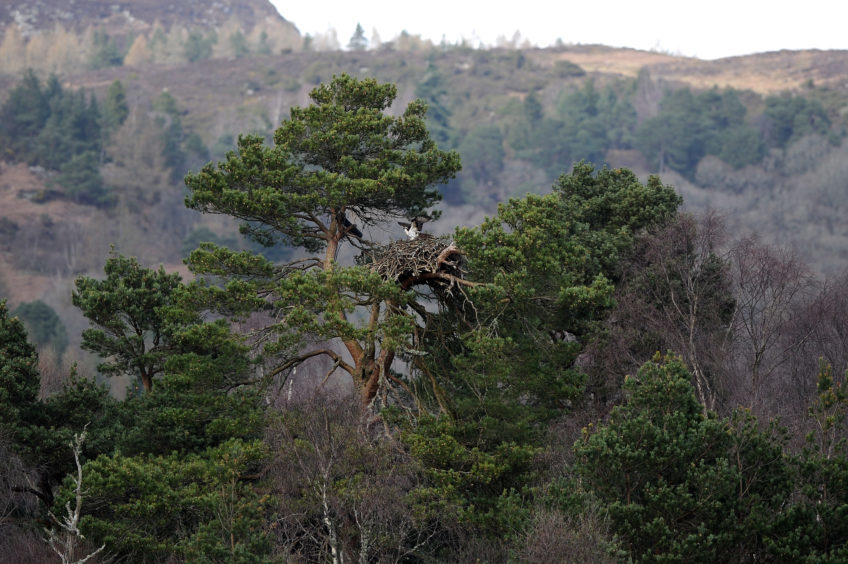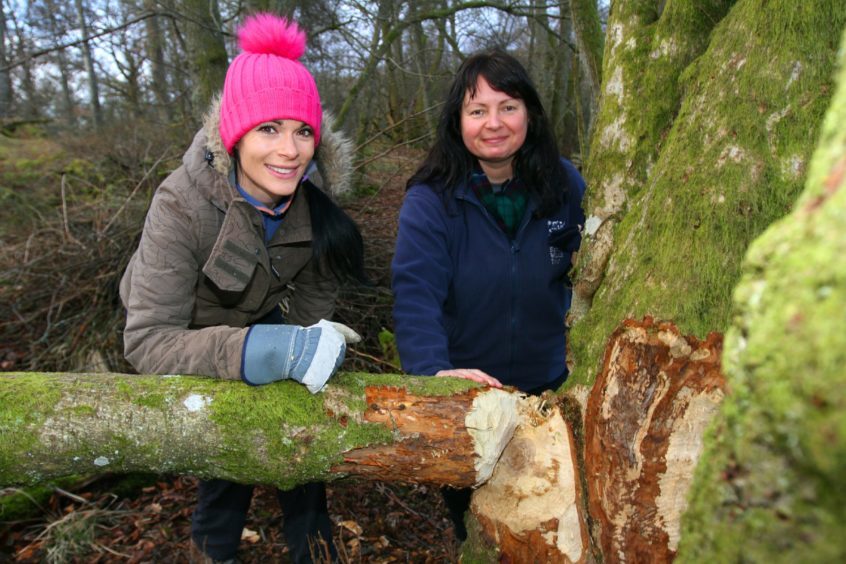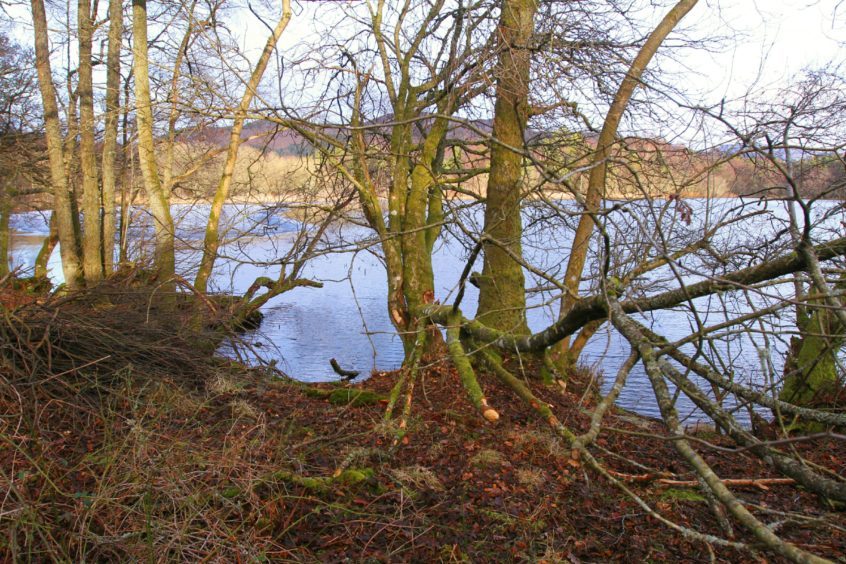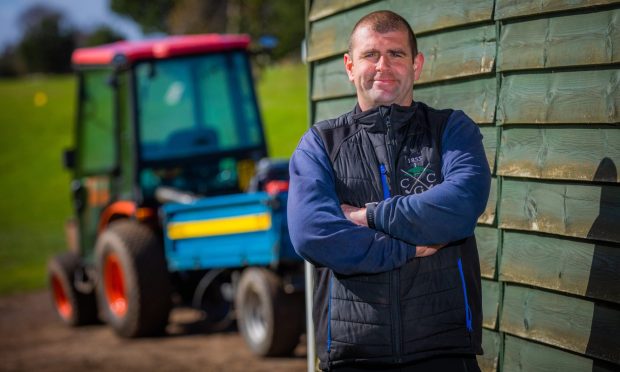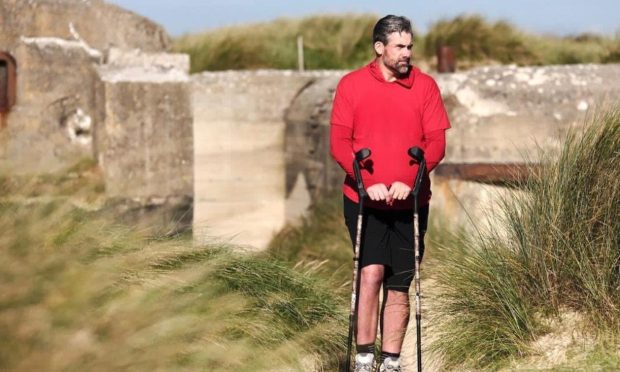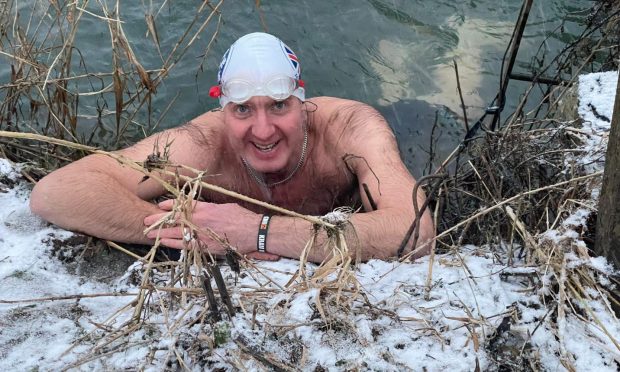Ospreys, beavers, red squirrels…and volunteers hard at work. Gayle spends a morning at Loch of the Lowes wildlife reserve
Best known for its famous osprey nest, Loch of the Lowes is worth a visit whether the majestic birds of prey are home or abroad.
There’s frost on the ground and a distinct nip in the air when I arrive at the wildlife reserve near Dunkeld, and I pull on a woolly hat, scarf and pair of warm gloves.
I’m here to meet Duncan Budge and his team of volunteers who are hard at work building a new office for rangers and volunteers.
As the Scottish Wildlife Trust’s Reserves Project Officer, Duncan oversees – and actively takes part in – practical work on reserves all year round.
“We’re working on making steps up to the new office and digging trenches to put in phone and power lines today,” says Duncan, hammering in a nail.
“Normally, we’d be out in the middle of a reserve, probably up to our knees in bog, trimming, felling and planting trees, rebuilding dry stane dykes, or putting in footpaths.
“There’s a lot of ongoing maintenance to be done, whether removal of non-native species or overhanging branches, or strimming, cutting back and so on.
“It’s thanks to groups of volunteers that it gets done; the bottom line is I couldn’t do my job without them.”
Volunteers here today range from those who live locally – and offer their services for free – to those who hail from abroad and are being funded by the European Voluntary Service.
It would be rude not to get stuck in so Duncan hands me a shovel and I make a feeble attempt to help dig a trench.
It’s tough work hurling chunks of earth into the wheelbarrow and I’m sweating and throwing off layers within seconds.
I take my hat off to the volunteers, who are clearly made of sterner stuff.
“Working with the Scottish Wildlife Trust (SWT) as a volunteer gives people a head start with their careers,” says Duncan.
“We have volunteers from France, Spain and Scotland today but they regularly come from all over Europe.”
A trip to the reserve’s hide is a must, even if the ospreys are away, which they are when I visit. You can spy on the nest with the naked eye, or binoculars and telescopes.
“They don’t come back from Africa until mid-March, and they always return to that tall Scots pine tree,” says Emma Castle-Smith, the visitor centre’s assistant manager, pointing across the loch.
“It might not look like it, but their nest is as big as a double bed and it gets bigger every year! It’s amazing to be able to get so close to it and you get such an amazing view from the hide.”
Perthshire ranger Rachael Hunter tells me the ospreys first arrived here in 1969 and have been successfully breeding since 1971.
“It’s important that we keep watch over the ospreys 24 hours a day,” she says.
“I co-ordinate a pool of volunteers who help with that. They observe the ospreys’ behaviour and movements, record details in a diary and inform visitors about them.”
Unsurprisingly, the loch is teeming with bird life, and species include the rare goldeneye, the great crested grebe, widgeon, teal, mallard, whooper swan and greylag goose.
Then, of course, there are the beavers. There’s a family of the creatures living here on the loch and Rachael says she’s more than happy to have them.
There’s evidence of them everywhere – gnawed tree stumps, chunks out of trees, chewed branches, wood chippings galore and sticks stripped bare of bark.
Apparently their lodge is at the other side of the loch, accessible only by boat.
“We monitor the beavers to see what kind of trees they prefer to eat and use,” says Rachael.
“We look at how this is affecting the ecosystem within the reserve. Where trees fall down after beavers have effectively felled them, parts of dark woodland open up and bring in light which benefits flowers, insects and birds and creates new habitats.”
There are otters here, too, and Duncan tells me there’s “rivalry” between the animals and beavers.
Red squirrels, woodpeckers and other species are in abundance, and you’re pretty sure to spot something that excites you at this nature haven.
info
The SWT is always on the hunt for volunteers and at Loch Lowes, roles include volunteer guides in the hide, visitor centre assistants, and osprey watch volunteers.
For more details, or to apply to become a volunteer, email ecastle-smith@scottishwildlifetrust.org.uk or perthshireranger@scottishwildlifetrust.org.uk or see scottishwildlifetrust.org.uk




